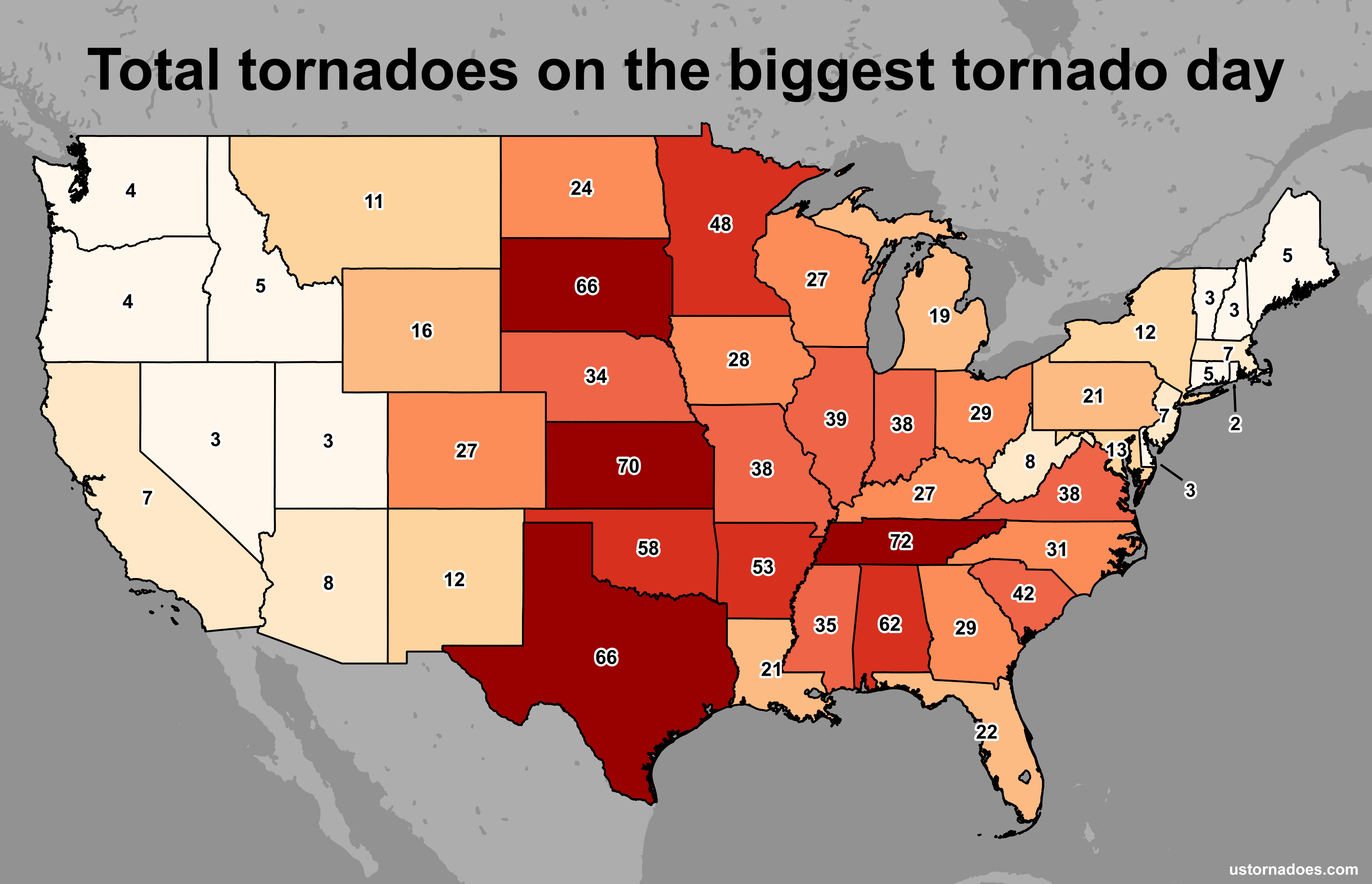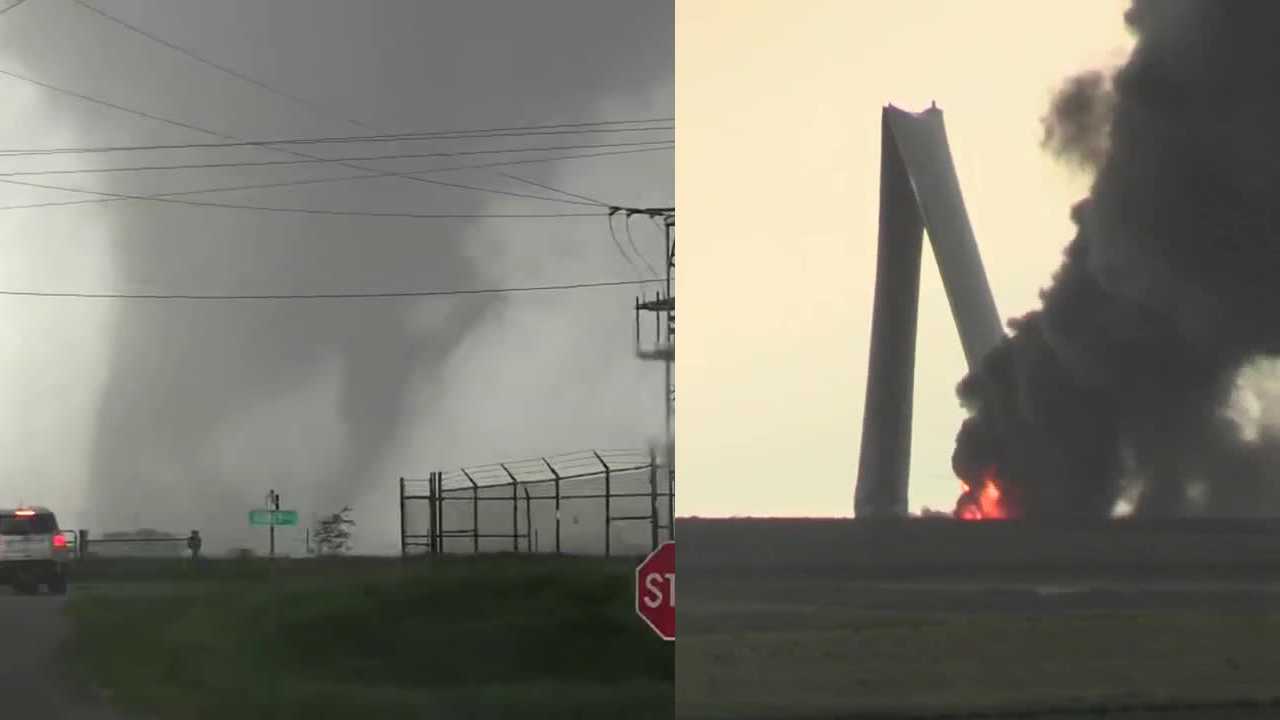Tornado Activity in Iowa Today
Tornado in iowa today – Tornadoes have been reported in Iowa today, bringing the potential for severe weather and damage. The National Weather Service (NWS) has issued tornado warnings and watches for several counties in the state, including Polk, Dallas, and Warren counties.
The violent tornadoes that swept through Iowa today left a trail of devastation, particularly in the charming town of Greenville . As the storm raged, homes were reduced to rubble, trees were uprooted, and power lines snapped, leaving the community in darkness.
Greenville, known for its serene landscapes and friendly residents, now faces the daunting task of rebuilding amidst the wreckage, while the state of Iowa grapples with the aftermath of these devastating tornadoes.
Tornado Warnings and Watches
- Tornado Warning: Polk County, effective until 4:30 PM CST
- Tornado Warning: Dallas County, effective until 4:00 PM CST
- Tornado Watch: Warren County, effective until 6:00 PM CST
Potential Impact
The tornadoes could bring strong winds, hail, and heavy rain. They could also cause damage to buildings, power lines, and trees. Residents in the affected areas should take precautions to stay safe, such as seeking shelter in a sturdy building or underground.
Today’s tornadoes in Iowa have left a trail of destruction, affecting communities across the state. In Greenville, Iowa, Greenville Iowa , homes and businesses have been damaged, and residents are assessing the extent of the devastation. The storm’s path continues to unfold, with reports of additional tornadoes touching down in other parts of Iowa.
Emergency responders are on the scene, providing assistance and assessing the damage.
Historical Tornado Data for Iowa
Iowa has a long and storied history with tornadoes. The state is located in the heart of Tornado Alley, a region of the central United States that experiences more tornadoes than any other part of the world. As a result, Iowa has been hit by some of the most devastating tornadoes in history.
According to the National Weather Service, Iowa has averaged 54 tornadoes per year since 1950. This is more than any other state in the United States. The most tornadoes ever recorded in Iowa in a single year was 92 in 1967. Iowa is also home to the deadliest tornado in U.S. history, the Tri-State Tornado of 1925, which killed 695 people as it traveled through Missouri, Illinois, and Indiana.
The recent tornado that ravaged Iowa has left a trail of destruction in its wake. For the latest updates and eyewitness accounts, visit our comprehensive coverage at iowa tornado today . The tornado’s path of destruction is still being assessed, but it is clear that this storm has had a devastating impact on the state of Iowa.
Most Tornado-Prone Areas in Iowa
The most tornado-prone areas in Iowa are the central and western parts of the state. The city of Des Moines is particularly vulnerable to tornadoes, as it is located in the middle of Tornado Alley. Other tornado-prone areas in Iowa include the cities of Sioux City, Council Bluffs, and Cedar Rapids.
Tornado Safety and Preparedness
Tornadoes are violent storms that can cause widespread damage and loss of life. It is important to be aware of the different types of tornadoes and how to stay safe during a tornado.
Tornadoes are classified by their intensity on the Enhanced Fujita Scale (EF Scale). The EF Scale ranges from EF0 to EF5, with EF5 being the most intense. EF0 tornadoes have winds of 65 to 85 mph, while EF5 tornadoes have winds of 200 mph or more.
Tornadoes can occur anywhere in the United States, but they are most common in the Great Plains and the Midwest. Tornadoes can form at any time of year, but they are most common in the spring and summer months.
There are a number of things you can do to stay safe during a tornado:
– Be aware of the weather forecast and be prepared to take shelter if a tornado warning is issued.
– If you are outside when a tornado warning is issued, seek shelter in a sturdy building.
– If you are in a car when a tornado warning is issued, pull over to the side of the road and stay in the car.
– If you are in a mobile home, evacuate immediately and seek shelter in a sturdy building.
It is also important to have an emergency plan in place in case of a tornado. Your emergency plan should include:
– A designated place to shelter in your home.
– A way to communicate with family members in case of an emergency.
– A list of emergency supplies, such as food, water, and first aid supplies.
By following these tips, you can help to stay safe during a tornado.
Tornado Forecasting and Tracking

Tornado forecasting and tracking are critical to providing timely warnings to communities at risk. These processes involve a combination of weather observations, numerical modeling, and advanced technology.
The tornadoes that ravaged Iowa today were a devastating sight. The iowa tornado left a trail of destruction in its wake, tearing through homes and businesses alike. As the sun sets on this tragic day, we can only hope that the communities affected by the tornado in Iowa today will find the strength to rebuild and recover.
Meteorologists use a variety of data to forecast tornadoes, including surface observations, radar data, and satellite imagery. They look for patterns and trends that indicate the presence of atmospheric instability, such as high wind shear and warm, moist air.
Today, a tornado touched down in Iowa, wreaking havoc across the state. One of the hardest-hit areas was Greenfield, where the twister caused significant damage to homes and businesses. For more information about the tornado in Greenfield, visit this link . The storm continued to move across Iowa, leaving a trail of destruction in its wake.
Numerical Modeling
Numerical modeling is a powerful tool used to forecast tornadoes. These computer models simulate the behavior of the atmosphere, taking into account factors such as temperature, pressure, and wind speed. By running these models, meteorologists can predict the likelihood and location of tornado development.
Technology in Tornado Detection
Technology plays a vital role in tornado detection. Doppler radar is a key tool, as it can detect the rotation of air within a storm. This information can help meteorologists identify tornadoes and track their movement.
Other technologies, such as lightning detection networks and mobile weather apps, can also provide valuable information about tornadoes. These tools can help meteorologists issue warnings more quickly and accurately.
Accuracy and Limitations
Tornado forecasting is not an exact science. While forecasts have improved significantly in recent years, there are still limitations. Tornadoes can be difficult to predict, especially in the early stages of development.
Despite these limitations, tornado forecasts provide valuable information to communities at risk. By understanding the potential for tornadoes, people can take steps to stay safe, such as having a plan in place and seeking shelter when warnings are issued.
Economic and Environmental Impact of Tornadoes: Tornado In Iowa Today
Tornadoes can have a devastating economic and environmental impact on Iowa. The economic impact of tornadoes can be measured in terms of property damage, business disruption, and lost productivity. Tornadoes can also cause environmental damage, such as damage to infrastructure and ecosystems.
Economic Impact
The economic impact of tornadoes in Iowa can be significant. In 2008, a tornado outbreak caused an estimated $2.8 billion in damage in Iowa. The tornadoes destroyed or damaged homes, businesses, and infrastructure. The tornadoes also caused business disruptions and lost productivity.
Environmental Impact
Tornadoes can also have a significant environmental impact. Tornadoes can damage infrastructure, such as power lines and water mains. Tornadoes can also damage ecosystems, such as forests and wetlands. The damage caused by tornadoes can take years to repair.
Recovery Efforts, Tornado in iowa today
After a tornado, recovery efforts begin immediately. The first priority is to ensure the safety of survivors. Once the survivors are safe, the focus turns to rebuilding the community. Recovery efforts can include repairing or replacing damaged homes and businesses, restoring infrastructure, and cleaning up debris.
Tornado Climatology and Research

Tornadoes, with their immense power and destructive force, have captivated the interest of scientists and researchers worldwide. Understanding the intricate factors that contribute to their formation and behavior is crucial for developing effective prediction and mitigation strategies.
Research on tornadoes has advanced significantly in recent years, leading to a deeper understanding of their climatology and characteristics. Scientists have identified specific meteorological conditions that favor tornado development, such as strong wind shear, atmospheric instability, and the presence of moisture.
Factors Influencing Tornado Formation
- Wind Shear: Significant differences in wind speed and direction at various atmospheric levels create wind shear, which provides the rotational force necessary for tornado formation.
- Atmospheric Instability: Unstable atmospheric conditions, often associated with warm, moist air rising rapidly, provide the energy source for tornadoes.
- Moisture: Abundant moisture in the atmosphere, particularly in the form of water vapor, is essential for cloud formation and the development of updrafts.
Ongoing research continues to refine our understanding of tornado behavior and improve forecasting capabilities. Scientists are utilizing advanced computer models, data analysis techniques, and field observations to gain insights into tornado dynamics and predict their occurrence more accurately.
Future of Tornado Prediction and Mitigation
The future of tornado prediction and mitigation holds promising advancements. Enhanced monitoring systems, coupled with real-time data analysis, will enable earlier detection and more precise warnings. Research on tornado-resistant structures and community preparedness plans will play a vital role in mitigating the impact of these destructive events.
As research continues to unravel the complexities of tornadoes, we can expect significant progress in forecasting, warning, and mitigating their devastating effects, ultimately protecting lives and communities.